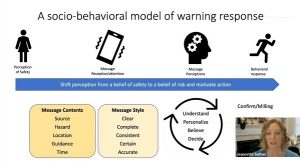FUSEE commends report, calls for paradigm shift from firefighting to firelighting
4 min read
from the Wildland Fire Mitigation and Management Commission and FUSEE
A federal report issued Sept. 27 recommends an immediate and dramatic shift in the way Americans think about and respond to wildland fire.
Tim Ingalsbee, executive director of Firefighters United for Safety, Ethics, and Ecology, said the report essentially appeals for “a sociocultural paradigm shift” in society’s relationship with fire.
Tim commended the report and called for a new mission in fire management that “transcends conventional firefighting and surrenders the quixotic goal of excluding all fire from the land.”
“Continued fire exclusion and systematic fire suppression is simply unsustainable from a socioeconomic and ecological standpoint,” Tim said. “All fire-dependent species and fire-adapted ecosystems in North America need more fire, not less, to recover from past fire exclusion and prepare for future climate change and wildfires.
He said the commission’s recommendation to enable beneficial fire through prescribed burning, Indigenous cultural burning, and wildfire managed for resource benefits “will provide the right amount and kind of fuels treatments at the pace and scale needed to convert wildfire incidents from threats into opportunities.”
The Wildland Fire Mitigation and Management Commission’s second and final report to Congress reflects one of the most sweeping and comprehensive reviews of the wildfire system to date. It offers 148 policy recommendations covering seven key themes:
- Urgent New Approaches to address the wildfire crisis
- Supporting Collaboration to improve partner involvement at every scale
- Shifting from Reactive to Proactive in planning for, mitigating and recovering from fire
- Enabling Beneficial Fire to reduce the risk of catastrophic wildfire
- Supporting and Expanding the Workforce to hire and retain the wildland firefighting staff needed to address the crisis
- Modernizing Tools for Informed Decision-making to better leverage available technology and information
- Investing in Resilience through increased spending now to reduce costs in the long run
FUSEE said two of the recommendations stand out as “absolutely essential” for solving the crisis in the short-term while sustaining our ability to live and work with fire in the long-term: (1) enabling beneficial fire; and (2) supporting and expanding the workforce.
“The ultimate objective is not only to reduce potential wildfire damage, but also to safely reap the rewards of beneficial fire use,” Tim said. “The sooner we plan and prepare communities for fire–from all sources–the sooner we can restore ecosystems with fire.
He said that underlying all of the recommendations is the essential need to support and expand the workforce. They will do the work of implementing the policies that go beyond firefighting to include the full breadth of fire management.
“Realistically, that workforce will be comprised mostly of young people, but federal agencies are failing to recruit and retain young workers to fill their ranks,” Tim said. “The reason goes beyond low wages and miserable working conditions.”
Young people are far more diverse, better educated in ecology, and more technologically skilled than previous generations of firefighters, he explained.
“They do not want to jump on the treadmill of endless fire suppression that they know is part of the problem driving the wildfire crisis,” he said. “The young generation wants to become part of the solution to the climate and wildfire crises.”
Created in 2021, the federal Wildland Fire Mitigation and Management Commission was co-chaired by the Departments of Agriculture, the Interior and the Federal Emergency Management Agency.
The 50 commission members were selected from more than 500 applicants, representing federal agencies, state, local, and Tribal governments, as well as the private sector. The commission submitted their first report to Congress in February 2023, which recommended strategies to improve aerial firefighting efforts and meet equipment needs through 2030.
The commission agreed that a challenge of this magnitude requires involvement from the whole community. “This requires meaningful shared decision-making with a range of entities – Tribal, state, and local governments; residents; non-governmental organizations; private industry; the research community; and others – at every level,” the report states.
Governance systems and structures must be more inclusive of non-federal entities and must involve greater collaboration, both among federal agencies and between federal agencies and non-federal governments, organizations, and communities, according to the commission. Beyond greater collaboration, they said, “partners at all scales should be empowered – through funding, decision-making tools, program flexibilities, and other means – to identify and implement locally driven solutions.”
Rather than selecting one or more potential recommendations, the Commission urged an “all of the above” approach, because the scale of the problem requires broad, integrated solutions.
The commission is recommending that Congress act as quickly as possible.
“Reminders of the urgency of the need to address this crisis are all too frequent, from the smoky skies that blanketed communities across the eastern United States in the summer of 2023, to, just weeks later, the devastating wildfire in Hawai’i that became the nation’s deadliest in more than a century,” the report pointed out.
Tim Ingalsbee of FUSEE noted that enabling beneficial fire and supporting and expanding the fire management workforce will be essential “if we are to safely work with and sustainably live with fire on the land.”
He commended commission members for their dedicated service over the past year, “grappling with complex, interconnected, wicked problems, and multi-faceted solutions that are equally complex, interconnected, and involve difficult choices over tradeoffs.”






